Evolutionary Ecology
The department of Evolutionary Ecology gathers complementary skills in behavioural ecology, population dynamics, population biology, community ecology, and methodology (statistics and modelling). The research done in the department aims at studying how animal species evolve in a changing world by understanding the causes of the evolution of traits, adaptations and interactions. For that, we consider different levels of organization from individuals to populations and communities. Because organisms cannot be considered isolated from other biotic factors, we consider pathogens but also competing species within communities.
We study how individuals adapt to their environments that are largely impacted by anthropic pressures, and how life history traits and behaviour evolve in response to these pressures. Although we mainly focus on phenotype, we more and more consider the mechanistic link between the genotype and the phenotype. We develop the theoretical framework of our discipline through a conceptual and modeling approach. In parallel, we test hypotheses that arise from theoretical predictions through experimental, comparative and observational approaches on different biological models (insects, birds, mammals). Experimental approaches are developed in the laboratory (insect model) and in natura (bird, insect and mammal models). Observational and comparative research is mainly concerned with vertebrates. Our approaches are also, and increasingly, interested in the mechanisms of adaptive responses. In addition to the classical approaches of demographic analysis and trait change, methods of ecophysiology, chemical ecology and molecular biology are used.
Our department hosts several long-term studies of wild populations of different species. These long-term studies offer a valuable way to understand how biotic and abiotic factors affect individuals’ life history traits, and the functioning of populations in natura. Five populations of mammalian species are thus monitored for several years (more than 40 years on roe deer, 30 on Alpine marmots, 25 years on cats, 16 years on zebras, and 20 years on impala). Two of our study sites (La Sassière in Vanoise National Park (Alpine marmots) and Hwange National Park) have been certified as “Site d’Etude en Ecologie Globale” (SEEG), and two (ZA “Hwange” and ZA “Antarctic and sub-Antarctic”) were certified as “Zone Atelier” by the CNRS.
The department of Evolutionary ecology is also largely involved in training activities. Lastly, we also have strong socio-economic relationships. Indeed, because we address questions of major societal interest (global warming, public health) we tightly collaborate with socio-economic partners (Office Français de la Biodiversité, Vanoise National Park, Hwange National Park in Zimbabwe, Office National des Forêts, etc.) and participate to general public and media events.
Publications
Display of 2071 to 2100 publications on 2483 in total
Invading introduced species in insular heterogeneous environments
Ecological Modelling . 188 : 62-75
Journal article
see the publicationInterêts des modéles detérministes et stochastiques en épidémiologie des maladies infectieuses : exemple du Hantavirus Puumala
Epidémiologie et Santé Animale . 47 : 63-82
Journal article
see the publicationModelling the abundance of mosquito vectors versus flooding dynamics
Ecological Modelling . 183 ( 2-3 ) : 173-181
Journal article
see the publicationRelationships between plant-parasitic nematode community fallow duration and soil factors in the Sudano-Sahelian area of Senegal
Agriculture, Ecosystems & Environment . 108 : 302-317
Journal article
see the publicationThe mycorrhizal fungus Glomus intraradices and rock phosphate amendment influence plant growth and microbial activity in the rhizosphere of Acacia holosericea
Soil Biology and Biochemistry . 37 : 1460-1468
Journal article
see the publicationSoil bacterial diversity responses to root colonization by an ectomycorrhizal fungus are not root-growth dependent
Microbial ecology . 50 : 350-359
Journal article
see the publicationThe Dynamics of Transposable Elements in Structured Populations
Genetics . 169 : 467-474
Journal article
see the publicationSpider webs designed for rare but life-saving catches
Proceedings of the Royal Society B: Biological Sciences . 272 : 1587-1592
Journal article
see the publicationFate of Listeria monocytogenes in experimentally contaminated French sausages
International Journal of Food Microbiology . 101 : 189-200
Journal article
see the publicationHost and food searching in a parasitic wasp Venturia canescens: a trade-off between current and future reproduction?
Animal Behaviour . 70 : 145-152
Journal article
see the publicationDensity-dependent cohort body mass in two contrasting roe deer populations.
7th European Roe deer Meeting . : 1 p.
Conference paper
see the publicationThe response of fawn survival to changes in habitat quality varies according to cohort quality and spatial scale
Journal of Animal Ecology . 74 : 972-981
Journal article
see the publicationEffect of observer experience on the monitoring of a mouflon population
Acta Theriologica . 50 ( 1 ) : 109-114
Journal article
see the publicationBig mothers invest more in daughters - reversed sex allocation in a weakly polygynous mammal
Ecology Letters . 8 : 430--437
Journal article
see the publicationEcological correlates of home-range size in spring–summer for female roe deer (Capreolus capreolus) in a deciduous woodland
Journal of Zoology . 367 : 301-308
Journal article
see the publicationGenetic structure of the feral cat (Felis catus L.) introduced 50 years ago to a sub-Antarctic island
Polar Biology . 28 : 268-275
Journal article
see the publicationBold attitude makes male urban feral domestic cats more vulnerable to Feline Immunodeficiency Virus
Neuroscience and Biobehavioral Reviews . 29 : 151-157
Journal article
see the publicationGeneration time: a reliable metric to measure life-history variation among mammalian populations
The American Naturalist . 166 : 119-123
Journal article
see the publicationIncidence and persistence of classical swine fever in free-ranging wild boar (Sus scrofa)
Epidemiology and Infection . 133 : 559-568
Journal article
see the publicationAbsence of heterozygote advantage in a population of fallow deer Dama dama L.
Biological Letters . 42 : 3-12
Journal article
see the publicationMolecular phylogeny of the genus Mus (Rodentia: Murinae) based on mitochondrial and nuclear data
Biological Journal of the Linnean Society . 84 ( 3 ) : 417-427
Journal article
see the publicationMorphological evolution ecological diversification and climate change in rodents
Proc. R. Soc. Lond. B . 272 : 609-617
Journal article
see the publicationEvaluating the temperament in shelter dogs
Journal of Behavior . 142 : 1307-1328
Journal article
see the publicationK-select analysis: a new method to analyse habitat selection in radio-tracking studies
Ecological Modelling . 186 : 143-153
Journal article
see the publicationClimate predictability and breeding phenology in red deer : timing and synchrony of rutting and calving in Norway and France
Journal of Animal Ecology . 74 : 579-588
Journal article
see the publicationCan we use the young :female ratio to infer ungulate population dynamics ? An empirical test using red deer (Cervus elaphus) as a model
Journal of Applied Ecology . 42 : 361-370
Journal article
see the publicationIncreased effect of harsh climate in red deer with a poor set of teeth
Oecologia . -- : 1-14
Journal article
see the publicationAre hybridogenetic complexes structured by habitat in water frogs?
Journal of Evolutionary Biology . 18 ( 6 ) : 1575-1586
Journal article
see the publicationSondage sur les maladies abortives chez les ongulés sauvages et domestiques en alpage
Faune Sauvage .
Journal article
see the publication
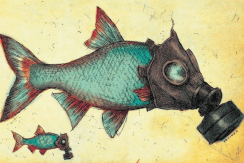
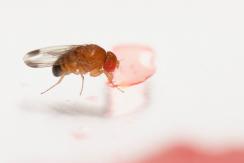
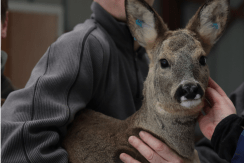
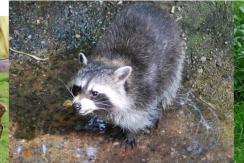
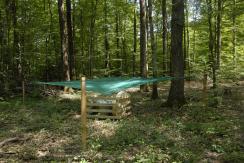
You also, comment on this article